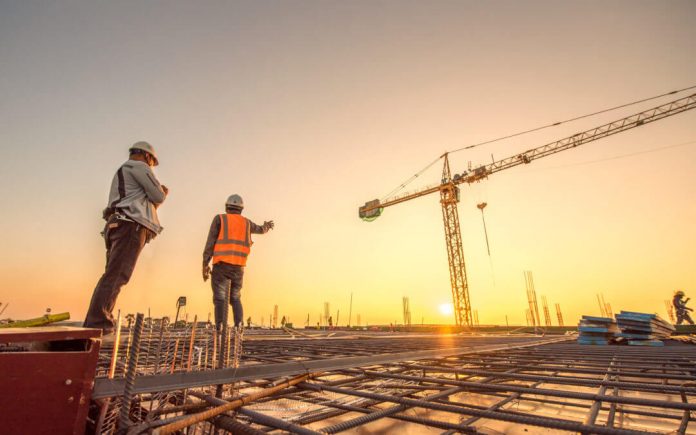This article is written by Venkat Ramaiah Chavali, pursuing a Diploma in Entrepreneurship, Administration and Business Laws from LawSikho.
Table of Contents
Introduction and scope
The pandemic COVID-19 globally needs no introduction though it is yet to celebrate its first birthday. Every type of industry is affected by this pandemic. The Construction Industry (CI) is no exception to this aftermath. In Hyderabad for example, during the lockdown period, the road and flyover activity was accelerated as traffic interruption was no more an issue. Yet, in the case of CI it is not just about the “how”, but also“how much” has the pandemic affected it. It is enormous. Everything from the way of designing, to contracting to working has changed and will continue to change as the situation further evolves and in a permanent manner for at least a reasonably foreseeable future.
Construction Industry is an umbrella term; activities of trade, manufacture and services based on building, maintaining, and repairing of structures come under it. It builds the Infrastructure of a nation. CI may be broadly divided into three groups though there is nothing hard and fast about it. They are: (1) Building CI – engaged in the business of constructing residential, commercial, Industrial, or other buildings, (2) Heavy CI – engaged in heavy construction other than building. For example, highways, bridges and tunnels, hydel and power projects, etc. (3) Special Trade CI – other than (1) & (2) and include such projects as painting, electrical work, plumbing etc.
The scope of this article is to briefly consider the overall effect and adjustments made and being made in the CI due to the pandemic, the legal issues that popped up in its wake and the way forward.
An overview to understand the extent and enormity of the pandemic on CI
The impact of the pandemic on CI is enormous because construction is a multi-stake holder, multi supply chain dependent and multi service industry, with the result when any one of them is affected it does cast its shadow across the industry. Furthermore, the effect of this impact on India’s employment and economy is extensive. After agriculture, CI is the second largest employer – 57.5 million people accounting for 8% of GDP according to the ‘KPMG International Survey’. CI being the core sector of several industries like cement, steel, tile, etc., are dependent on it; for example, construction equipment manufacturing alone comprises 500 companies with an estimated size of INR 375 billion by 2020 (Construction World Magazine-Digital Edition April 2020). So, the impact of COVID-19 is not only enormous but extensive.
Some survey numbers to bolster the above statements
The sector wise investment in India of INR 80 Crores in 2018-2019 in infrastructure is shown in the pie-diagram below. It is interesting to note that 95% of it went into just six sectors.

To appreciate the spread and reach (extent) of CI just think of the number of fields the power sector alone touches! Some of them to wit are:
- Machinery: Excavating, blasting, tunneling, concreting,
- Metals: Steel, copper, Aluminum, Lead, Zinc, Silver, Gold,
- Non-metals: Mica, graphite, ebonite, porcelain, plastics (as conductors, insulators, and di-electrics),
- Chemicals and many more.
Now let us look at the enormity of the impact. According to the report (December 2019 ) published by the Ministry of Statistical and Program Implementation (MoSPI) it can be seen that the majority (those under implementation and development adding to 60%) are affected.

Domino effect of COVID-19 on construction industry
Nothing can better explain the domino effect than the hit taken by the persons towards the far end of the line of migrant workers.
We are all familiar with the reverse exodus of migrant workers holding their children in the crook of their arms, balancing their belongings on their heads, and trudging along for days on end to reach their native homes hundreds of miles away. It shocked the conscience of the nation. The Government at the Center and Railways scrambled to run ‘Shramik Express’ trains, the first and only specific exception made to mass public transport after total lockdown. Most of them are construction labour or workers. And it did not stop there, the workers deprived of their livelihood are merely surviving.
According to the Inferential Survey Statistics and Research Foundation, a body of retired Indian Statistical Service and Indian Economic Service officials:
The Mahatma Gandhi National Rural Employment Guarantee Act (MGNREGA), which promises every rural household up to 100 days’ work a year, in reality did not serve the laborers as was expected or publicized. The survey found that while the job scheme was supposed to absorb a substantial number of the returned migrants, it provided employment to just 3.53% of them. Politics being what they are, in Bihar The Grand Alliance has released its manifesto focusing on farm laws and jobs, to exploit the mood of the workers who it is opined strongly nurse the feeling that election is the best opportunity to teach political leaders some hard lessons. All this shows the domino effect of where it started and where it is going with the end still not in sight.
Impact and the ways the pandemic is affecting Indian CI
The pandemic is impacting the CI at three levels viz.,
- Market and Supply-Chain disruption,
- Reduction and readjustment in demand, and
- Depletion and paucity of funds due to fallen economic activity.
These three factors, namely supply-chain, demand and funds have a spiraling effect on how an industry does. In the present situation understandably, it is a downward spiral.
Ways it is affecting CI:
- Labor shortage due to reverse migration.
- Raising costs due to:
- Increase in input material cost caused by:
- reduced or stoppage of production,
- transportation difficulties.
- The use of pandemic safety compliances and costs like maintaining social distance, conducting periodic medical tests on workers, work area sanitization, personal safety items like masks, face shields, hand sanitizers, soaps, etc.
Legal implications
The members of CI be they developers, contractors, supply chain vendors or owners, all are bound by the various clauses, schedules and liquidated damage covenants as provided in their mutual contracts; notwithstanding that neither the pandemic nor the unfolding havoc it is wreaking are foreseeable.
Each side to the contract will go through them most probably with their advocates for reasons of their own to mitigate the consequences resulting from the pandemic. And there could be some opportunistic litigation too. No matter what the motive is, if a claim is legally tenable it needs to be addressed, proactively by the conscientious, reactively if the other party has precipitated.
Suggested proactive action plan
- Whether required under the contract or not – notify all the contractual partners with a properly worded notice in writing.
- Document all impacts properly. While documentation of all aspects is stressed on under project management it is an advice seldom heeded. But such an attitude could be a self-goal when it comes to documenting the effects of COVID-19 on the project/contract. Record the details of impact, action taken to ward off or mitigate the same factually and chronologically.
- Check on any safeguards you have included or taken like indemnification or insurance or any such other. Initiate claims as applicable.
- Keep the partners and parties to the contract informed in writing periodically and whenever a significant occurrence takes place.
It all may look like avoidable chores, but it is better to be safe than sorry.
Reactive measures
Allow me to concisely discuss at the expense of taking a slight detour from the main topic the two terms “force majeure” and, “impossibility of performance” – also sometimes referred to as Doctrine of frustration. These two terms are routinely inserted in a casual and laconic way in contract clauses, without much thought. And in detailing the clauses the inclusion of ‘pandemic’ had never occurred to any. It is necessary to remove certain misconceptions in the use of “force majeure” and or “impossibility of performance”. The pandemic taught us to use the appropriate term(s) and to think over all eventualities and not to just use or invoke them as a knee jerk reaction.
To begin with, the term force majeure is not used in the Indian Contract Act, 1872 (the Act). Section 56 of the Act provides for the impossibility of performance while Section 32 deals with contingent contracts.
Now which of these two sections i.e. S.32 or S.56 is or becomes applicable?
In the case of National Agricultural Cooperative Marketing Federation Of India v. Alimenta S.A., the Supreme Court observed (on 22nd April 2020) that where a contract contains an implied or express stipulation it stands discharged on happening of particular circumstances. The dissolution of the agreement would take place under the terms of the contract itself. Such cases would be outside the purview of section 56 of the Indian Contract Act altogether. They would be dealt with under Section 32 of the Contract Act. (emphasis added)
Coming to the clause of force majeure which is considered by many as synonymous with doctrine of frustration or as covered u/s 56 of the Act, let me cite the case law:
- In Energy Watchdog v. CERC, (2017) 14 SCC 80 it was held that force majeure clauses are to be narrowly construed. Further, where the parties have a specific force majeure clause in the agreement, the provisions of the Indian Contract Act, 1872 would not apply.
The reason being, these two, force majeure and impossibility of performance (S.56 of the Act), operate on different principles and premises which are:
|
Force Majeure |
Impossibility of Performance (S. 56 of the Act) |
|
According to Black Law Dictionary ‘force majeure is an incident or result that cannot be prevented’. Under this clause if either party is prevented by a major force defined* or extraordinary circumstances beyond their control, then subject to giving notice such party may be excused from performance of those contractual obligations. The clause generally provides for extension of time or costs. * The force majeure clauses differ from contract to contract. Clause 19 of FIDIC (from French stands for, International Federation of Consulting Engineers) defines force majeure as:
FIDIC then goes on further defining sub-clauses. |
Section 56 of the Indian Contract Act covers some aspects of the ‘Doctrine of Frustration’ but it is larger than the doctrine and the Act never mentions the doctrine. It simply provides for ‘Impossibility of performance’. To apply the provisions of section 56 of the Act, the following five conditions must be fulfilled:
[refer to para 42 and 43 of the case of Industrial Finance Corporation of India Ltd. Vs. The Cannanore Spinning & Weaving Mills Ltd. and Ors, (2002) 5 SCC 54] |
|
Suffice to say that the contracts and wording of clauses differ from contract to contract and case to case; and industries or transactions entered between the parties which have not been affected by the pandemic cannot seek sympathy protection under these clauses. |
|
The way forward
The objective of any industry is survival, profit, and growth in that order; they are all a function of economy. Having seen the domino effect, it is important to know how different industries are linked to each other to chart the way forward.
The push-pull link between industries
Consider any industry “A”. There are certain industries that feed this industry “A” by providing the necessary inputs. Such industries are said to give a push to the industry “A”. For example, agriculture and trade push industries to CI. The industry “A” in its turn feeds some other industries which are said to be pulled by the Industry “A”. In case of CI it pulls industries like transport, power etc. There is a statistical method of measuring the quantum of push or pull an industry has. According to KPMG assessment CI has greater pull (score: 2.21) than push (score: 1.81). A net pull means an enhanced contribution to the economy per unit amount invested in it. Since CI has a greater score of pull than push, the amount invested in CI will result in multiple growth of the economy. So, CI can greatly contribute to the overall economy per every rupee invested in it. Therefore, the need of the hour is to address this industry on a war-footing.
How we reacted so far
Startled and confused by the unprecedented pandemonium caused by the seemingly known Coronavirus (later rechristened Novel Corona and then COVID-19), we reacted by choosing the flight – rather the hide – response to fight response. And the pandemic is continuing its bizarre course. Now that we reasonably know its character and have reconciled to the reality that we need to coexist with it for at least a few years, it is time to come to grips, reorganize things and handle it as a challenge and opportunity instead of as a problem and threat.
Every cloud has a silver lining
An unprecedented situation is to be met with a well thought out but radical approach.
A radical transformation is seldom the result of a gradual process but comes through a shocking experience or regimented training. To make clear let me take these two instances:
- The spurt in digital transactions in India is a consequence of note-ban shock.
- The high efficacy and discipline of the Army – while not underestimating the recruitment process – is because of the tough and grueling regimented training. But such regimentation in the construction industry is not possible, we are a democracy, we can only make laws and cannot dictate. This pandemic is more than a shock, it is up to us the people, and the governments to harness the opportunity with a constructive purpose. We have the cloud and if we do not see the silver lining let us find one!
World over including highly developed countries if there is one industry that employs maximum numbers at various levels be it knowledge, skilled, semi-skilled or unskilled workers and has a pull effect on the economy – it is the construction industry. The way forward is to upgrade at every level starting from unskilled to semi-skilled at the lower rung to Knowledge worker to Al (Artificial Intelligence) and beyond at the upper rungs.
It is an old Indian proverb that, “if you give a man a fish, he will be hungry tomorrow. If you teach a man to fish, he will be richer forever.” The unemployed and uneducated of India need to be skilled. The need now is more than ever before.
The largest part of the uneducated and unskilled is finding their wherewithal through manual labor, migrating from state to state. With need of the hour being social distancing the use of manual labor in CI – which in India is intensive – slows down and sometimes makes it difficult to perform certain tasks. The answer lies in skilling them in use of power tools and equipment. The continuing traditional way of working carrying a load on their head to move material at construction sites must stop. Just as hand-pulled rickshaws were replaced with pedaled ones and now by auto-rickshaws, now is the time to avail the opportunity to leapfrog from manual to meaningful mechanization. Meaningful in the sense not to reduce or eliminate employment but to improve working conditions by skilling and redeploying them increasing the productivity, reducing costs and in the process helping them help themselves upgrade their standards of living.
The construction equipment we use are the construction equipment used world over be they JCBs or Poclains (used in a generic sense). According to a United Nations report titled ‘The power of 1.8 billion’, 28% of India’s population is youth and is growing. India tops the list of top 10 countries with largest youth populations. And if we skill them they are good to go and work world over and become the workforce to the world, not just for India.
Imparting the skills
In this connection, Infrastructure Equipment Skills Council (IESC) – a Not for Profit organization under National Skill Development Corporation — is doing yeoman service. Supported by Government of India (GOI) and sponsored by various construction equipment manufacturers they impart and improve skills at various levels from unskilled to supervisory and beyond in stages. Upon completion of training each trainee is tested by an independent certifying body and successful candidates are awarded the certificate with GOI emblem and signed by designated authorities. The benefits of employing trained and certified operators in CI is being seen in terms of reduced fuel consumption per unit work, increased production per hour, lesser incidence of safety issues, higher machine availability as well as log book and record maintenance by the operators.
One field that needs to be addressed by the Governments is to make it compulsory by law to train contractors and use certified persons only. After all, even to drive a gearless moped one needs a driving license, but for operating construction equipment no license is mandated. The Governments must make it mandatory by law for operators to have the certificate to run machinery on site. The present ad hoc ‘guru-sishya-parampara’ (cleaner to helper to operator) way of learning is to be replaced or could only be an adjunct to formal training; not only to protect equipment, but also physical assets in the vicinity as well as life and limb of people working in and around the equipment. Improvement is possible when we temper the will to implement with the whip of law.
Some socially concerned may wonder but what about women-labor workers? Well, the heavier the equipment less the need for physical strength and greater the requirement of skill. Who else is better suited than a woman! The operating cabins of the equipment are provided with feather-touch controls, ergonomically placed around the seat, with a fan or optional air-conditioning, and coffee-percolator to boot. Women are found to be taking fish to water when put on these machines for training. IESC has already trained young women from North-Eastern States, and it is for the rest of India to follow the suit.
Before winding down the article let me substantiate the assertion made in the introductory para, “Everything from the way of designing, to contracting to working has changed and will continue to change as situation further evolves and in a permanent manner for at least a reasonably foreseeable future”, and tie-up the loose ends.
Design: The CI is quickly moving towards prefabricated structures, from bridges to buildings. Even in utilities changes are brought about in design. Indian Railways has come up with coach designs that have door handles replaced with foot pedals. The water taps and soap dispensers too are designed for foot operation. The lifts in Hyderabad airport are upgraded. One need not press or touch the button to select the level (floor), just one must point his finger towards the button and it senses, registers and moves to the selected level. Entries to security areas are no more by handling your document physically or by fingerprint biometric. It is done either with a camera and remote screen or more sophisticated facial reading software. Wood and laminated surfaces traditionally only treated for termite are now additionally provided with a durable antibacterial, and antifungal coating.
Contracting – working: As to contracts and contracting some immediate and short-term responses are discussed under the head “Legal Implications” (supra).
On working, according to insights from Dodge Data & Analytics based on the responses to direct questioning of contractors engaged in CI:
- About three-fourths of both civil and commercial contractors report that they changed work procedures to increase social distancing.
- Allowing remote working for office employees – 67% among commercial contracts and 50% in civil construction sector.
changing in a permanent manner: According to the same survey referred to above, 75% expect some of the changes implemented to be permanent; with specific focus on sanitation/cleanliness 53%, adjustments to work procedures for safety (from COVID like pandemics) 42%.
Law and Contract drafting: For medium and long term, the way contracts are drafted is undergoing a change. Pandemic and its impacts are factored in and the contingencies, force majeure and the like are more incisively explored for their impact while drafting the contract. Laws are being looked at and the requisite changes are being brought about – in the short and medium term by GOs and ordinances followed by enactments after considering all factors and implications for long term.
Summary and conclusion
- The Construction Industry (CI) is affected by the pandemic extensively and enormously.
- It resulted in a domino effect from supply chain disruption to the economy to workers to.
- However, because the CI has a net pull effect on the economy it is the right growth engine to invest in.
- The economic hardship and delays has set in motion a legal churn, parties rushing to protect from or exploit the situation.
- It need not be all gloom; it is a huge opportunity for the discerning people and governments to change things for the better.
Every calamity brings in its wake an opportunity if only one can see and grab. Shocking as the pandemic is, the shock itself is an opportunity to transform and re-orient so we as a nation can not only lift ourselves but can become a workforce to the world, we do have a head start and wherewithal.
Science insists on precautions over procedures because if precaution is not taken procedure may not yield the desired results. So, as a precaution, at every stage from initial response to final action involve knowledgeable persons and avail legal advice not only to ward off litigation but also for effective decisions; remember we are yet to know for sure what is in store for and from the members of CI; the situation is still evolving. It is practical and prudent to consult various experts in respective fields before taking medium- to long-term decisions. Better to be well equipped than live in denial.
References
[1] Sustainable Development Indicator Group (Working Draft Framework, Version 2, June 4/1996)
[2] Domino blocks picture from Google images
[3] KPMG Assessment report May 2020
[4] Holland & Knight CI Practice Group alert
[5] Dodge Data & Analytics (July 2020 publication)
[6] Legal Era
[7] latestlaws.com September 2020
[8] Article 1929 of Legal Service India
[9] www.iescindia.com
Students of Lawsikho courses regularly produce writing assignments and work on practical exercises as a part of their coursework and develop themselves in real-life practical skill.
LawSikho has created a telegram group for exchanging legal knowledge, referrals and various opportunities. You can click on this link and join:












